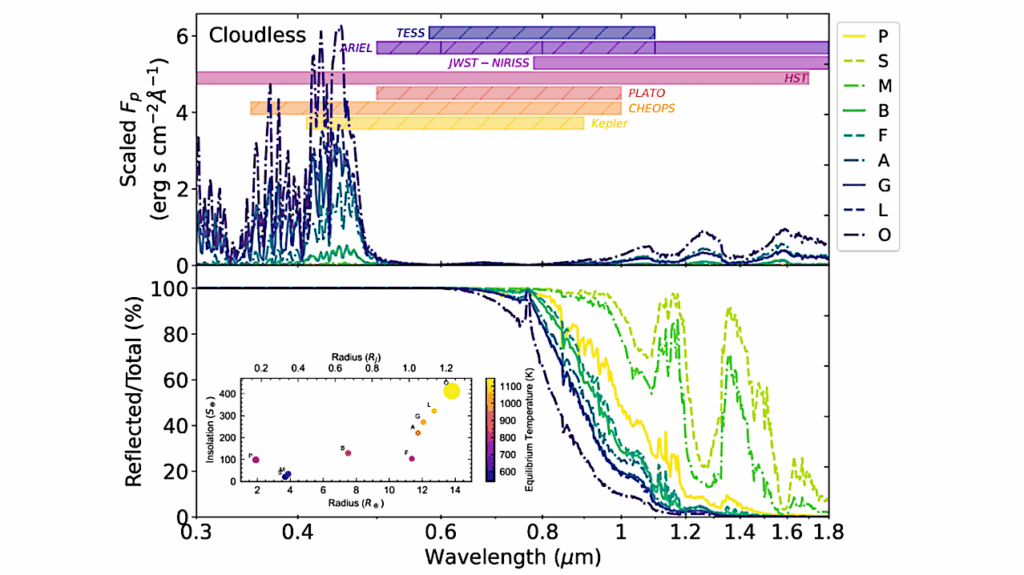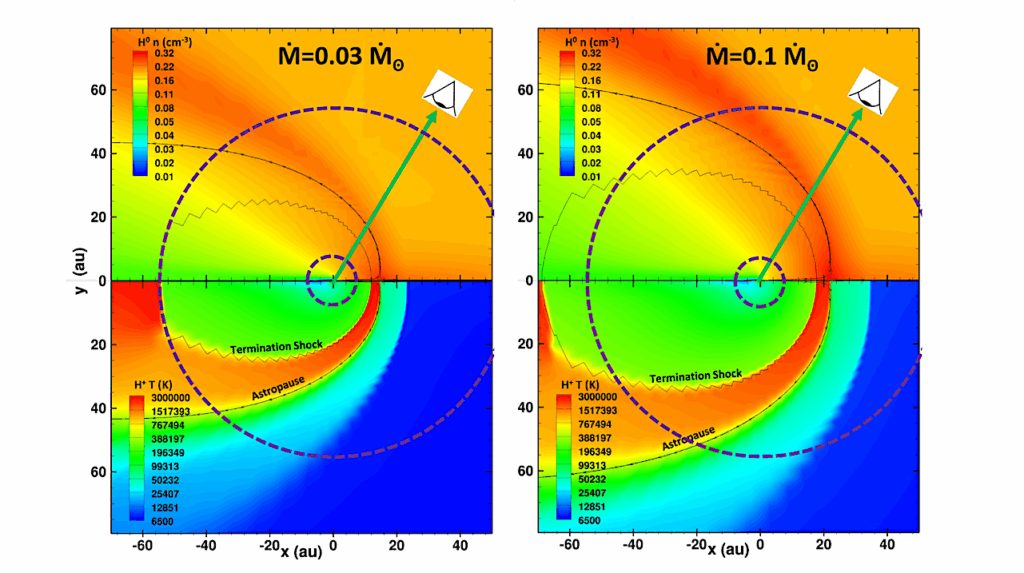TOI-1416: A Ssystem With A Super-Earth Planet With A 1.07d Period

TOI 1416 (BD+42 2504, HIP 70705) is a V=10 late G or early K-type dwarf star with transits detected by TESS. Radial velocities verify the presence of the transiting planet TOI-1416 b, with a period of 1.07d, a mass of 3.48MEarth and a radius of 1.62REarth, implying a slightly sub-Earth density of 4.50 g cm−3.
The RV data also further indicate a tentative planet c with a period of 27.4 or 29.5 days, whose nature cannot be verified due to strong suspicions about contamination by a signal related to the Moon’s synodic period of 29.53 days. The near-USP (Ultra Short Period) planet TOI-1416 b is a typical representative of a short-period and hot (Teq≈ 1570 K) super-Earth like planet.
A planet model of an interior of molten magma containing a significant fraction of dissolved water provides a plausible explanation for its composition, and its atmosphere could be suitable for transmission spectroscopy with JWST. The position of TOI-1416 b within the radius-period distribution corroborates that USPs with periods of less than one day do not form any special group of planets. Rather, this implies that USPs belong to a continuous distribution of super-Earth like planets with periods ranging from the shortest known ones up to ~ 30 days, whose period-radius distribution is delimitated against larger radii by the Neptune desert and by the period-radius valley that separates super-Earths from sub-Neptune planets.
In the abundance of small-short periodic planets against period, a plateau between periods of 0.6 to 1.4 days has however become notable that is compatible with the low-eccentricity formation channel. For the Neptune desert, its lower limits required a revision due to the increasing population of short period planets and new limits are provided. These limits are also given in terms of the planets’ insolation and effective temperatures.
H. J. Deeg, I. Y. Georgieva, G. Nowak, C. M. Persson, B. L. Cale, F. Murgas, E. Pallé, D. Godoy Rivera, F. Dai, D. R. Ciardi, J. M. Akana Murphy, P. G. Beck, C. J. Burke, J. Cabrera, I. Carleo, W. D. Cochran, K. A. Collins, Sz. Csizmadia, M. El Mufti, M. Fridlund, A. Fukui, D. Gandolfi, R. A. García, E. W. Guenther, P. Guerra, S. Grziwa, H. Isaacson, K. Isogai, J. M. Jenkins, P. Kábath, J. Korth, K.W.F. Lam, D. W. Latham, R. Luque, M. B. Lund, J. H. Livingston, S. Mathis, S. Mathur, N. Narita, J. Orell-Miquel, H.L.M. Osborne, H. Parviainen, P. P. Plavchan, S. Redfield, D. R. Rodriguez, R. P. Schwarz, S. Seager, A.M.S. Smith, V. Van Eylen, J. Van Zandt, J. N Winn, C. Ziegler
Comments: 31 pages, 31 figures, 8 tables, accepted for publication in A&A
Subjects: Earth and Planetary Astrophysics (astro-ph.EP)
Cite as: arXiv:2305.18542 [astro-ph.EP] (or arXiv:2305.18542v1 [astro-ph.EP] for this version)
Submission history
From: Grzegorz Nowak
[v1] Mon, 29 May 2023 18:15:27 UTC (5,018 KB)
https://arxiv.org/abs/2305.18542
Astrobiology








